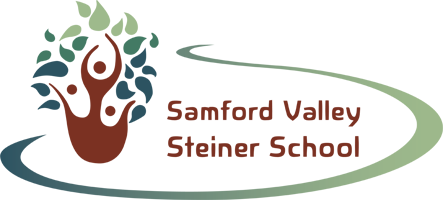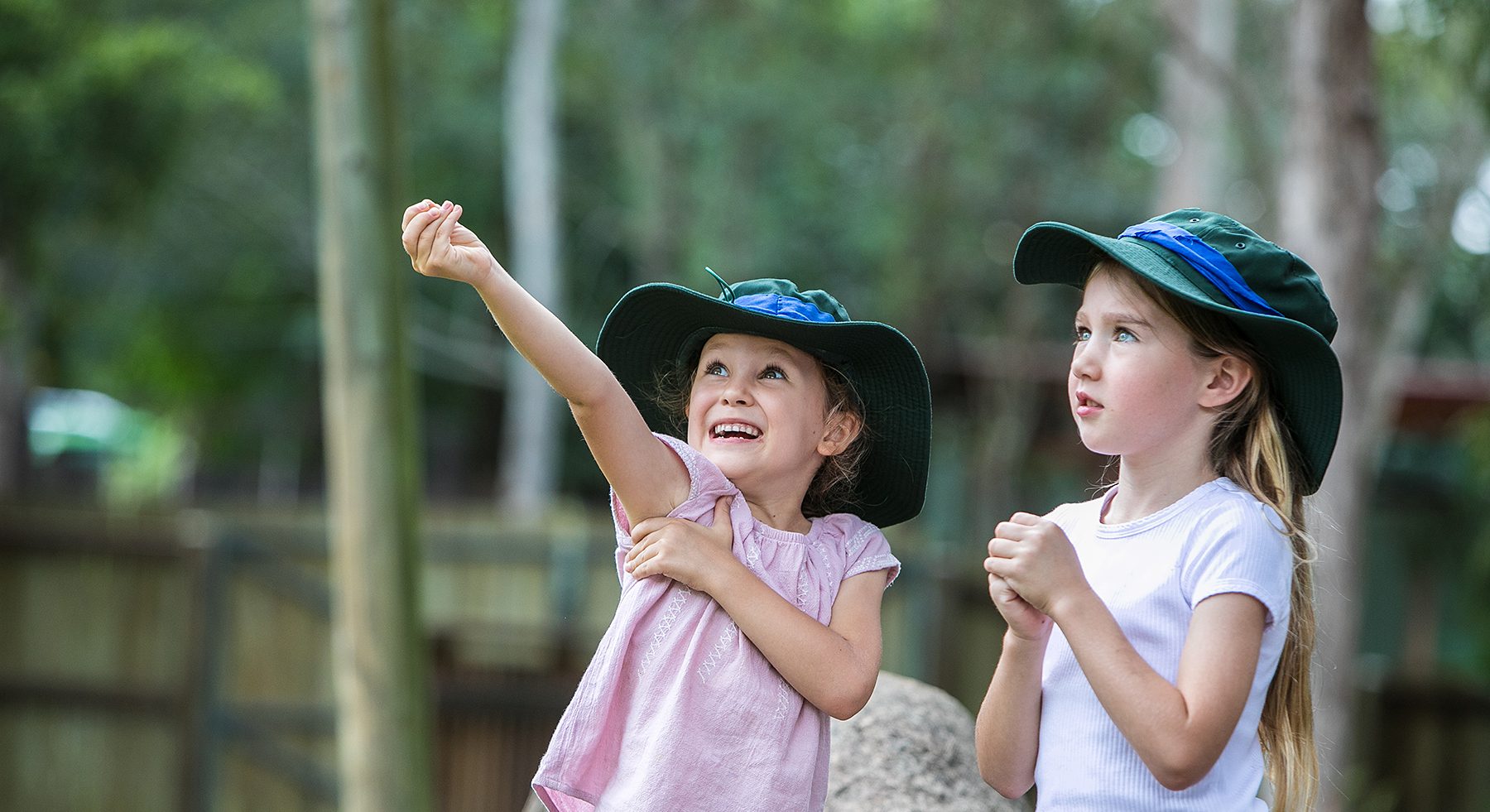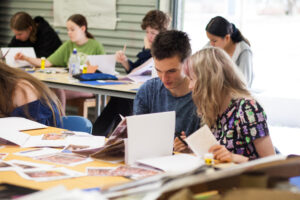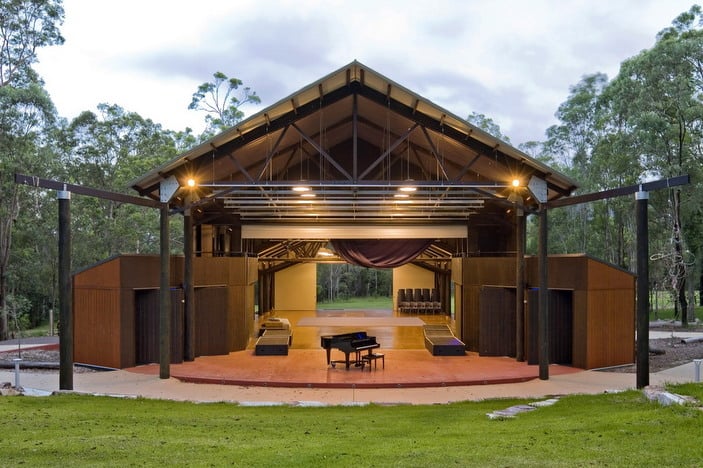Frequently Asked Questions
What is unique about Steiner Education?
The best overall statement on what is unique about Steiner education is to be found in the stated goals of the schooling: “to produce individuals who are able, in and of themselves, to impart meaning to their lives”.
The aim of Steiner schooling is to educate the whole child, “head, heart and hands”. The curriculum is as broad as time will allow, and balances academics subjects with artistic and practical activities.
Steiner teachers are dedicated to creating a genuine love of learning within each child. By freely using arts and activities in the service of teaching academics, an internal motivation to learn is developed in the students, doing away with the need for competitive testing and grading.
Some distinctive features of Steiner education include the following:
- Academics are de-emphasized in the early years of schooling. There is no academic content in the Steiner early years (i.e. pre-class 1) experience (although there is a good deal of cultivation of pre-academic skills), and minimal academics in Class 1. The letters are introduced artistically, with the children learning to read from their own writing in Class 2 or 3.
- During the primary school years (Classes 1-7) the students have a class teacher who ideally stays with the same class for their full primary schooling.
- Certain activities which are often considered “frills” at mainstream schools are central at Steiner schools: art, music, gardening, and foreign languages to name a few. In the younger grades, all subjects are introduced through artistic mediums, because the children respond better to this medium than to dry lecturing and rote learning. All children learn to play recorder and to knit.
- There are no “textbooks” as such in the first through fifth grades. All children have “main lesson books”, which are their own workbooks, which they fill in during the course of the year. They essentially produce their own “textbooks” which record their experiences and what they’ve learned. Upper grades may use texts to supplement their main lesson work.
- All children learn a stringed instrument from Class 3 onwards. This includes small group tuition as well as orchestra.
- Learning in a Steiner school is a non-competitive activity. There are no grades given at the primary level; the teacher writes a detailed evaluation of the child at the end of each school semester.
- The use of electronic media, particularly television, by young children is strongly discouraged in Steiner schools.
What is the curriculum at a Steiner School like?
The Steiner curriculum is designed to be responsive to the various phases of a child’s development. The era of human history being studied corresponds in many ways with the stage of development of the child. For example, pre-Class 1 children are presented with fairy stories matching their dreamy state of consciousness, Class 4 study the Vikings and Norse mythology which suit their war-like feelings at this age, Class 5 learn of the Greeks at the time their intellect is awakening and their sense of fair play is becoming obvious, and so on.
The main subjects, such as history, language arts, science and mathematics are, as mentioned, taught in main lesson blocks of hours per day, with each block usually lasting three weeks.
The total Steiner curriculum has been likened to an ascending spiral: subjects are revisited several times, but each new exposure affords greater depth and new insights into the subject at hand.
A typical Primary School curriculum would likely look something like the following:
Classes 1 – 3
- Pictorial introduction to the alphabet, writing, reading, spelling, poetry and drama.
- Folk and fairy tales, fables, legends, Old Testament stories.
- Numbers, basic mathematical processes of addition, subtraction, multiplication and division.
- Nature stories, house building and gardening.
Classes 4 – 6
- Writing, reading, spelling, grammar, poetry and drama.
- Norse myths, history and stories of ancient civilisations (e.g. Greek, Indian).
- Review of the four mathematical processes, fractions, percentages, and geometry.
- Local and world geography, comparative zoology, botany and elementary physics.
Class 7
- Creative writing, reading, spelling, grammar, poetry and drama.
- Medieval history, Renaissance, world exploration, history and biography.
- Geography, physics, basic chemistry, astronomy, geology and physiology.
Specialist subjects also taught include:
Handwork: knitting, crochet, sewing, cross stitch, basic weaving, toy making and woodworking.
Music: singing, recorder, string instruments, wind, brass and percussion instruments.
Foreign Languages (varies by school): Spanish, French, Japanese and German.
Art: wet-on-wet water colour painting, form drawing, beeswax and clay modelling, perspective drawing.
Movement: eurythmy, gymnastics, group games
How is reading taught in a Steiner school?
Steiner education is deeply bound up with the oral tradition, typically beginning with the teacher telling the children fairy tales throughout the early childhood years and first grade. The oral approach is used all through Steiner education: mastery of oral communication is seen as being integral to all learning.
Reading instruction, as such, is slightly deferred. Instead, writing is taught first. During the first grade the children explore how our alphabet came about, discovering, as the ancients did, how each letter’s form evolved out of a pictograph. Writing thus evolves out of the children’s art, and their ability to read likewise evolves as a natural and, indeed, comparatively effortless stage of their mastery of language.
What is the benefit of having the same class teacher throughout primary school?
Between the ages of seven and fourteen, children learn best through acceptance and emulation of authority, just as in their earlier years they learned through imitation. In primary school, particularly in the lower grades, the child is just beginning to expand his or her experience beyond home and family. The class becomes a type of “family” as well, with its own authority figure “the teacher” in a role analogous to a parent.
With this approach, the students and teachers come to know each other very well, and the teacher is able to find over the years the best ways of helping individual children in their schooling. The class teacher also becomes like an additional family member for most of the families in his/her class.
How are personality conflicts between students and teachers handled?
This is a very common concern among parents when they first hear about the “Class Teacher” method. However, in practice, the situation seems to arise very rarely, especially so when the teacher has been able to establish a relationship with the class right from the first grade. Understanding the child’s needs and temperament is central to the teacher’s role and training. When problems of incompatability do occur, the teacher and the family, work together with the support of school mentors, to determine and undertake whatever corrective action would be in the best interests of the child and of the class.
Are Steiner schools religious?
In the sense of subscribing to the beliefs of a particular religious denomination or sect, Steiner schools are not religious. Steiner schools, however, tend to be spiritually oriented and are based out of a generally Christian perspective. The historic festivals of Christianity, and of other major religions as well, are usually observed in the class rooms and in school festivals. Classes in religious doctrine are not part of the Steiner curriculum, and children of all religious backgrounds attend Steiner schools. Spiritual guidance is aimed at awakening the child’s natural reverence for the wonder and beauty of life.
What is Anthroposophy?
The term “Anthroposophy’ comes from the Greek “anthropos-sophia” or “human wisdom”. Steiner expanded an exacting scientific method by which one could do research for her/himself into the spiritual worlds. The investigation, known also as Spiritual Science is an obvious complement to the Natural Sciences we have come to accept. Through study and practiced observation, one awakens to his/her own inner nature and the spiritual realities of outer nature and the cosmos. The awareness of those relationships brings a greater reverence for all of life.
Steiner and many individuals since, who share his basic views, have applied this knowledge in various practical and cultural ways in communities around the world. Most notably, Steiner schools have made significant impact on the world. Curative education, for mentally and emotionally handicapped adults and children, has established a deep understanding and work with people who have this difficult destiny. Bio-dynamic farming and gardening greatly expand the range of techniques available to organic agriculture. Anthroposophical medicine and pharmacy, although less widely known in Australia, are subjects of growing interest.
It should be stressed that while Anthroposophy forms the theoretical basis to the teaching methods used in Steiner schools, it is not taught to the students.
Anthroposophy has its roots in the perceptions, already gained, into the spiritual world. Yet these are no more than the roots. The branches, leaves, blossoms, and fruits of Anthroposophy grow into all the fields of human life and action.
How does Steiner deal with kids that are not so strong academically?
Steiner schools hesitate to categorise children, particularly in terms such as “slow” or “gifted”. A given child’s weakness in one area, whether cognitive, emotional or physical, will usually be balanced by strengths in another area. It is the teacher’s job to try to bring the child’s whole being into balance.
A child having difficulty with the material might be given extra help by the teacher or by parents; tutoring might also be arranged. Correspondingly, a child who picked up the material quickly might be given harder problems of the same sort to work on, or might be asked to help a child who was having trouble.
How well do Steiner graduates do on standard tests? How well do Steiner high school graduates do in tertiary education?
To the best of our knowledge, no controlled studies have been done on these questions, but anecdotal evidence collected from various sources would seem to suggest that Steiner graduates tend to score toward the high end on standardised examinations. As far as higher education goes, Steiner graduates have been accepted as students at, and have graduated from, some of the most prestigious colleges and universities in Australia.



